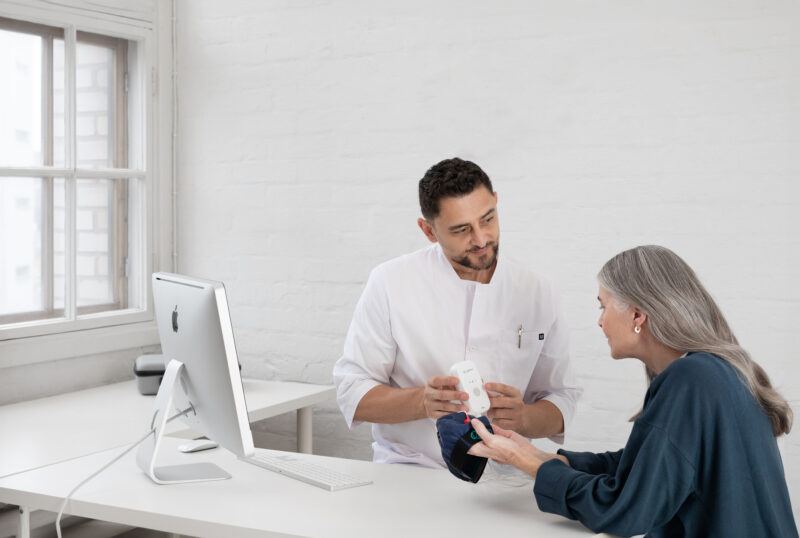Update of the international evidence-based guidelines for tDCS use

This summer came with an update of the international evidence-based guidelines for tDCS use!
We are thrilled (but not surprised) that Transcranial direct current stimulation (tDCS) was bumped to a Level A (= definitely effective) for Major Depressive Disorder (MDD).
The recommendation scale goes: Level A (definitely effective), Level B (probably effective), Level C (possibly effective), and no recommendation. This means that tDCS has received the highest possible recommendation in the treatment of depression!
Aside from Major Depressive Disorder, authors Fregni et al evaluated and gave new recommendations for the use of tDCS in Pain, Parkinson’s Disease Motor Function and Cognition, Stroke Motor Function and Language, Epilepsy, Obsessive-Compulsive Disorder, Tourette Syndrome, Schizophrenia and Drug Addiction.
As Sooma offers tDCS therapy for Depression and Pain, these indications will be the focus of this post. Enjoy the read!
tDCS in Major Depressive Disorder
Depression is a psychiatric disorder that can have devastating effects on a person’s quality of life. Common treatments include pharmaceutical medications (antidepressants), behavioural therapies, and a range of neuromodulation treatments (ECT, rTMS, tDCS). With tDCS, a mild electric current is used to stimulate areas of the brain affected by depression. Hypoactive areas are given excitatory stimulation and hyperactive areas are given inhibitory stimulation, eventually restoring a healthy balance in the brain and relieving the patient of depressive symptoms.
At Sooma, we offer Sooma Depression Therapy, indicated for Major Depressive Disorder. To this date, thousands of patients around the world have been treated with Sooma Depression Therapy, with good results. In fact, our latest publication, based on 302 patients, shows a 61% response rate and 20% remission rate!
Read more about Sooma Depression Therapy.
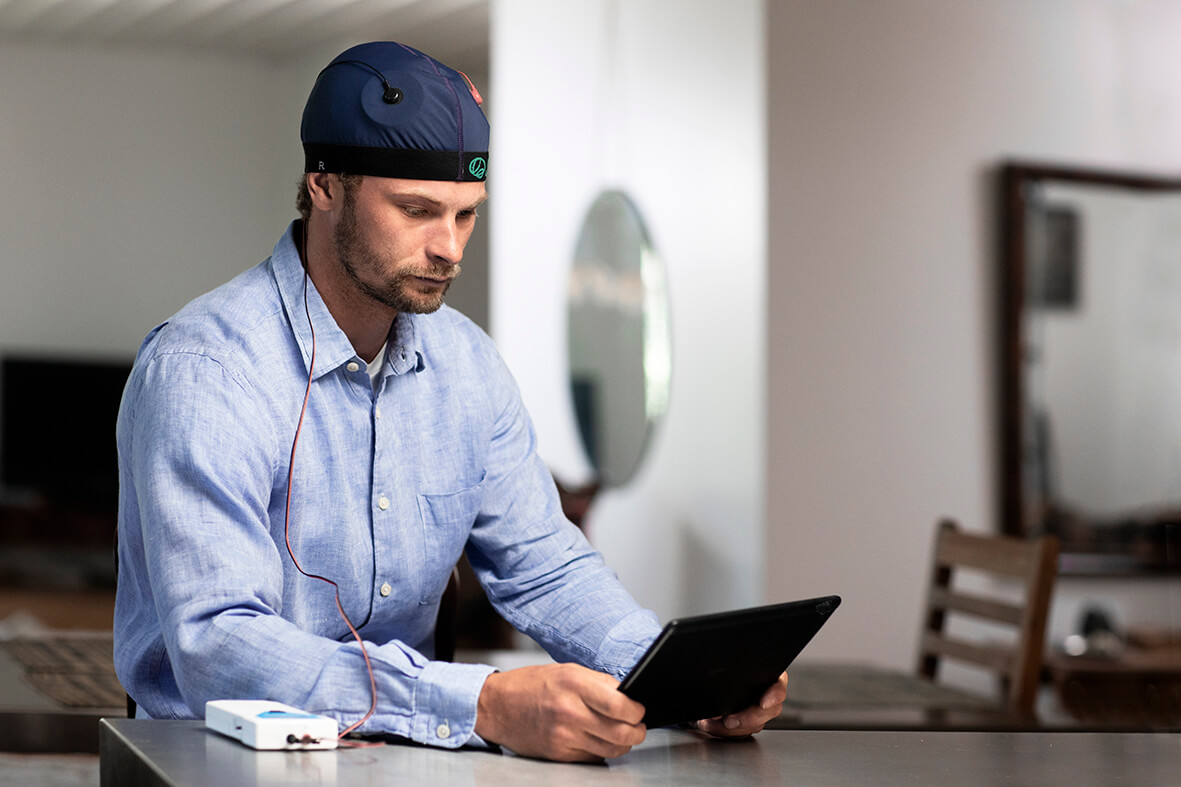
Evidence-based guideline recommendation
In the new evidence-based guidelines, Fregni et al reviews 18 studies with a total of 930 patients who received tDCS for Major Depressive Disorder. All but one study used anodal stimulation over the left DLPFC (F3), or slightly in front of the left DLPFC (pF3). Seven of the studies used cathodal stimulation over the right DLPFC (F4), four over the frontotemporal area (F8), and six over the supraorbital area (SO).
In the left DLPFC anode – right DLPFC cathode studies, positive studies showed significant improvement in severely to moderately depressed antidepressant-free patients, and additive effects in patients who were also on serotonin elevating medication. In the negative studies, the patients receiving tDCS did improve, but not enough for the results to be significantly different from sham tDCS. A study on pregnant women also showed improved, but nonsignificant results, but, significantly, one month postpartum, 75% vs. 15% of the active vs. sham tDCS patients were in remission.
In the left DLPFC anode – right frontotemporal cathode studies, there was significant improvement in severely to moderately depressed patients, in moderately treatment-resistant patients, and in patients with unipolar and bipolar depression.
In the left DLPFC anode – supraorbital cathode studies, the positive studies showed significant improvement in depressive symptoms, and one negative study found nonsignificant improvement in depressive symptoms.
Final recommendation:
Anodal tDCS over the left DLPFC is given a Level A recommendation (= definitely effective) for Major Depressive Disorder.
tDCS in Chronic Pain
Chronic pain is a neurological condition that often has a great negative impact on quality of life. It is often treated with pharmaceutical medications, but these may not be suitable for all patients. Some patients develop a high tolerance and no longer experience pain relief, and some may not be able to tolerate the medication or its side effects. tDCS is a drug-free option, where areas of the brain responsible for pain processing are stimulated with a mild electric current in order to relieve pain symptoms.
At Sooma, we offer Sooma Pain Therapy, which is indicated for chronic pain conditions Fibromyalgia and chronic Neuropathic pain.
Read more about Sooma Pain Therapy.
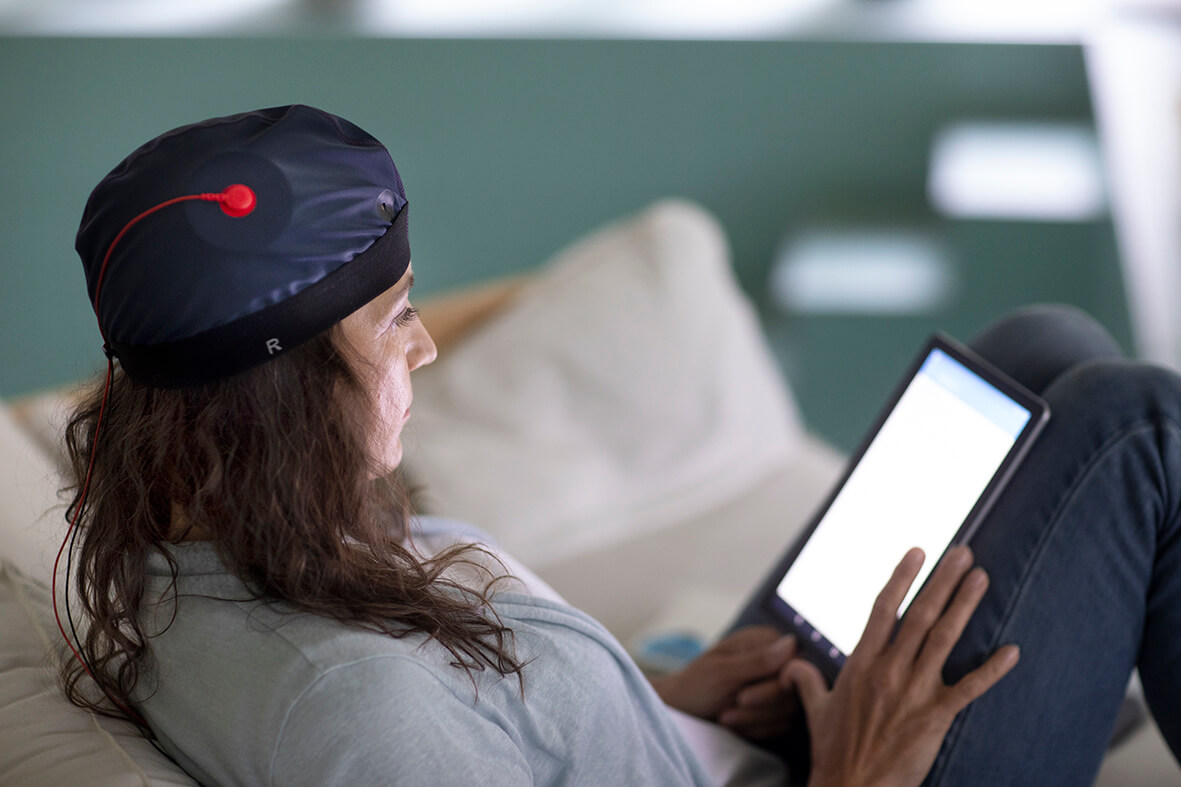
Evidence-based guideline recommendation
In the new evidence-based guidelines, Fregni et al reviews pain conditions chronic neuropathic pain, fibromyalgia, migraine, myofascial pain syndrome (MPS), postoperative acute pain after chronic pain-related surgery, and low back pain.
In Neuropathic pain, the authors reviewed 11 studies with a total of 279 patients. All but one study used anodal stimulation over the primary motor cortex (M1) on the side opposite to the pain (C3/C4), and cathodal stimulation over the contralateral supraorbital area (SO). One study used anodal stimulation over the contralateral SO, and cathodal stimulation over M1. In all but one of the studies using repeat sessions, significant improvement in pain symptoms were found. The one negative study used only 1 mA current compared to the 2 mA used in the others.
In Fibromyalgia, Fregni et al reviewed 8 studies with a total of 274 patients. All Class II RCTs using repeat sessions that applied anodal tDCS over the primary motor cortex (M1) found significant improvement in pain symptoms.
Final recommendations:
In Neuropathic pain, anodal tDCS over M1 is given a Level B (= probably effective) recommendation.
In Fibromyalgia, anodal tDCS over M1 is also given a Level B (= probably effective) recommendation.
Recommendations for tDCS in other indications
Scale:
Level A = definitely effective
Level B = probably effective
Level C = possibly effective
Negative Level A = definitely not effective
Negative Level B = probably not effective
Negative Level C = possibly not effective
Pain
- Migraine
- Anodal M1 tDCS: Level B
- Myofascial Pain Syndrome (MPS)
- no recommendation
- Postoperative acute pain after chronic pain-related surgery
- Postoperative anodal M1 tDCS: Level B
- Low back pain
- no recommendation
Parkinson’s disease
- Motor function
- Anodal motor/premotor/SMA tDCS: Level C.
- Anodal prefrontal tDCS: negative Level B recommendation (= probably not effective).
- Cognitive function
- Anodal DLPFC tDCS: Level B.
Chronic stroke
- Motor function
- Anodal tDCS on ipsilesional M1: Level B.
- Anodal tDCS of ipsilesional M1 to enhance robotic therapy: negative Level B.
- Cathodal tDCS of contralesional M1: Level B
- Bilateral tDCS of M1: Level B
- Aphasia
- Anodal tDCS of Broca’s area, its homologue, or Wernicke’s area: Level C
- Cathodal right frontotemporal tDCS: Level C
- Anodal stimulation of Broca’s area + cathodal stimulation of its homologue: Level C
Subacute stroke
- Motor function
- Anodal tDCS of ipsilesional M1: Level B
- Anodal tDCS of ipsilesional M1 to enhance robotic therapy: negative Level A
- Cathodal tDCS of contralesional M1: Level B
- Cathodal tDCS of contralesional M1 to enhance robotic therapy: negative Level B
- Bilateral tDCS of M1: Level C
Epilepsy
- Seizure frequency
- Cathodal tDCS: Level B
OCD and Tourette syndrome
- Obsessive-Compulsive Disorder
- Anodal pre-SMA tDCS: Level C
- Tourette syndrome
- no recommendation
Schizophrenia
- Auditory hallucinations and positive/negative symptoms
- Anodal left prefrontal + cathodal left temporoparietal tDCS: Level B
Addiction
- Alcohol – craving or relapses
- Right DLPFC anodal + left DLPFC cathodal tDCS: Level B
- Crack-cocaine
- no recommendation
- Methamphetamine
- no recommendation
Latest news

Sooma Announces Medical Technology Expert Andreas Hartlep as New CEO
Read more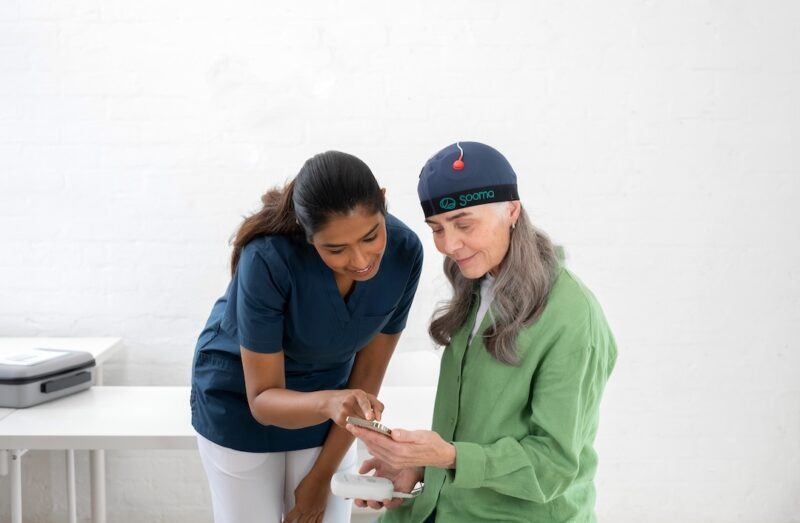
TGA approves Sooma’s at-home brain stimulation for depression in Australia
Read more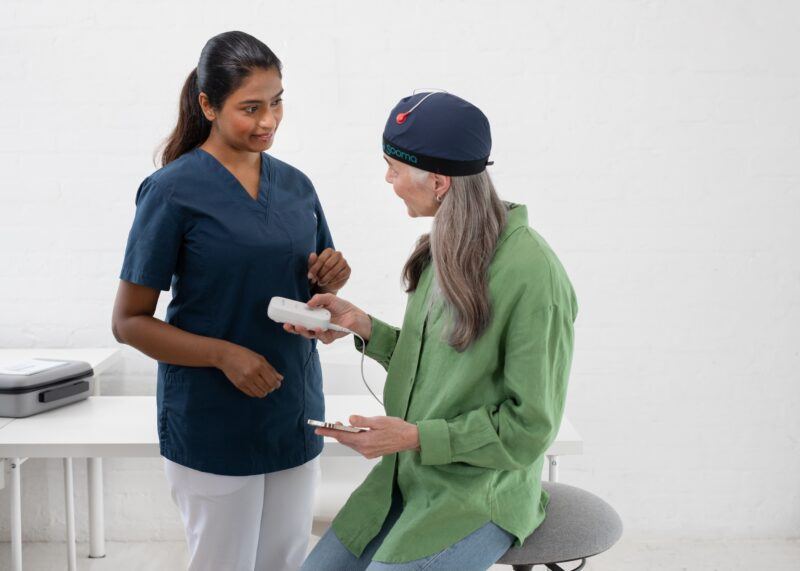
Sooma Medical Announces Pivotal FDA IDE Clinical Trial for At-Home Brain Stimulation Device for Depression Treatment
Read more